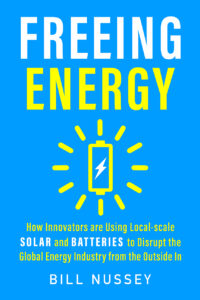In the late morning of April 9, 2004, 17 tanker trucks, and 5 armored escort vehicles left a logistics support area near Baghdad to resupply an army division fighting insurgents in Sadr City. At 12:30, only two kilometers from the convoy’s destination, the lead vehicle suddenly met a hail of small arms fire.
In this frantic, chaotic engagement, known as “The Good Friday Ambush,” five civilian contractors and three American soldiers lost their lives. Another 16 were wounded, and one contractor went missing during the attack. Also lost was much of the cargo carried by the convoy, destroyed in explosions, or spilled out onto the road through the bullet holes that pierced the tanker’s sides. One survivor said it looked like a “sprinkler systems, wetting down the pavement.” The cargo that spilled out on the road, that cost so many men their lives was fuel – not just for vehicles but also to power the electric generators on the front line.
The Good Friday Ambush was one of the worst convoy attacks of the Iraq war, but it was far from a unique event. By 2009, according to a Pentagon study, more than 3,000 troops and civilian contractors were killed or wounded in the wars in Afghanistan and Iraq as they protected convoys. Eighty percent of those convoys were transporting fuel.
As US defense secretary and former commander of the 1stMarine Division in Iraq, General James Mattis has observed, sending soldiers out into unsecured roads “gives the enemy the ability to choose the time and place of attacking us.” Reducing the military’s dependence on oil will save lives. It is no surprise then that military leaders like Mattis have concluded that “the military must be unleashed from the tether of fuel.”
GET MONTHLY NEWS & ANALYSIS
Unsubscribe anytime. We will never sell your email or spam you.
Freedom from Fuel
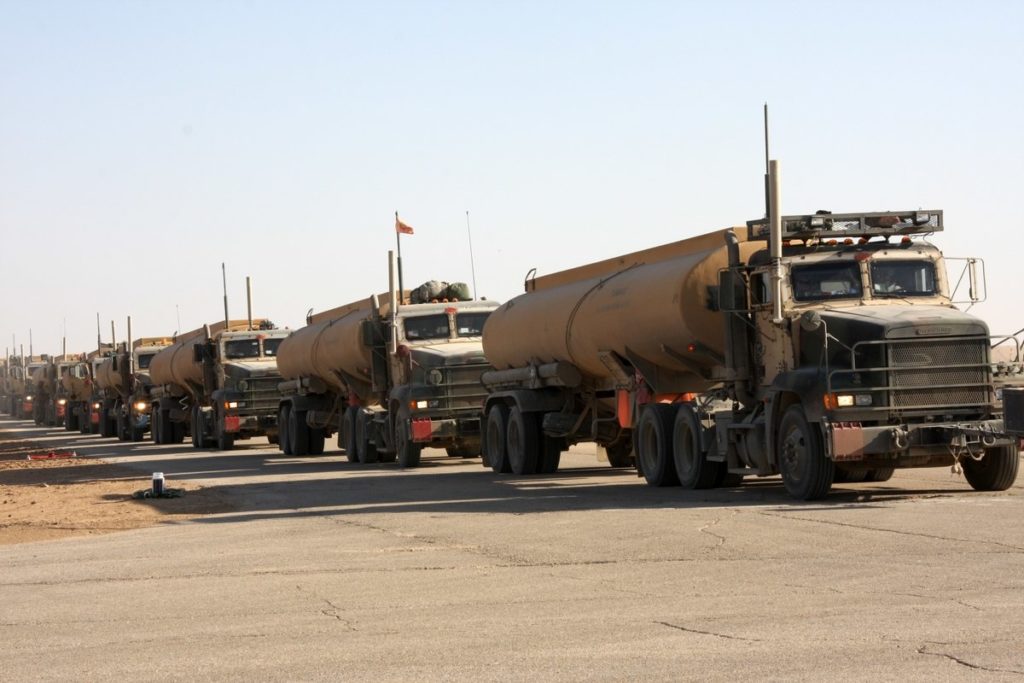
This will not be a trivial task. The US military depends on fuel. A lot of it. By one estimate, the military consumes 300,00 barrels of oil a day, making it the largest single consumer of oil in the world. And while a lot of that oil goes to powering the US’s enormous fleet of ships, planes, and other vehicles, as much as one-third of all military oil powers generators that produce electricity for the military’s 550,000 buildings and structures, housed in 523 separate installations around the globe.
So why does the military like diesel generators so much? For one, they are easily carried to the far-flung places in which the military operates. Small ones can even be taken into the field. But even in large permanent bases in the United States, generators are relied upon for power. Why? Because of the increasing vulnerability of our electrical infrastructure undermines the military’s fighting effectiveness. The ability to function even when the grid is down is increasingly crucial, particularly now that foreign governments are using cyber-attacks to target and take down electric grids (see my earlier post, Russia has infiltrated the US electric grid).
Think your utility bill is high? The Department of Defense budgets $15 billion a year for fuel, with the actual outlay often going even higher due to the often-volatile price of oil. Investments in solar and wind projects are allowing the military to tap these lower cost energy supplies, especially in their domestic bases. While the costs of energy are important, the strategic risks from oil are even greater. Imagine a military, powered largely by fossil fuels, finding itself hobbled as imported fuel supplies are disrupted due to heavy conflicts in oil-rich regions of the world.
Military Microgrids
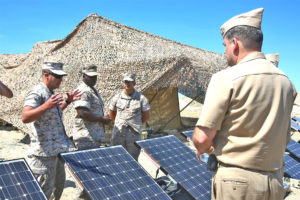
It’s clear that any plan to replace generators and fuel-based electricity must satisfy the military’s demands for reliability and security. Fortunately, such a technology already exists—microgrids powered by clean energy–and the military has been ramping up investment in it. According to a report by Navigant Research, annual military spending on microgrids is set to increase from $453 million in 2018 to $1.46 billion by 2026.
Serious research into alternative energies dates back to the Bush administration, but it really took off in 2008, when a program to develop microgrid tech was introduced, along with its own ungainly acronym (surely a sign of the military’s seriousness). The SPIDERS, or Smart Power Infrastructure Demonstration for Energy Reliability and Security, program initiated a series of alternative energy pilots with the goal of creating “energy secure installations.” Hundreds of initiatives throughout the armed forces and the Department of Defense were launched through this program, using a variety of military-civilian partnership models to spur innovation.
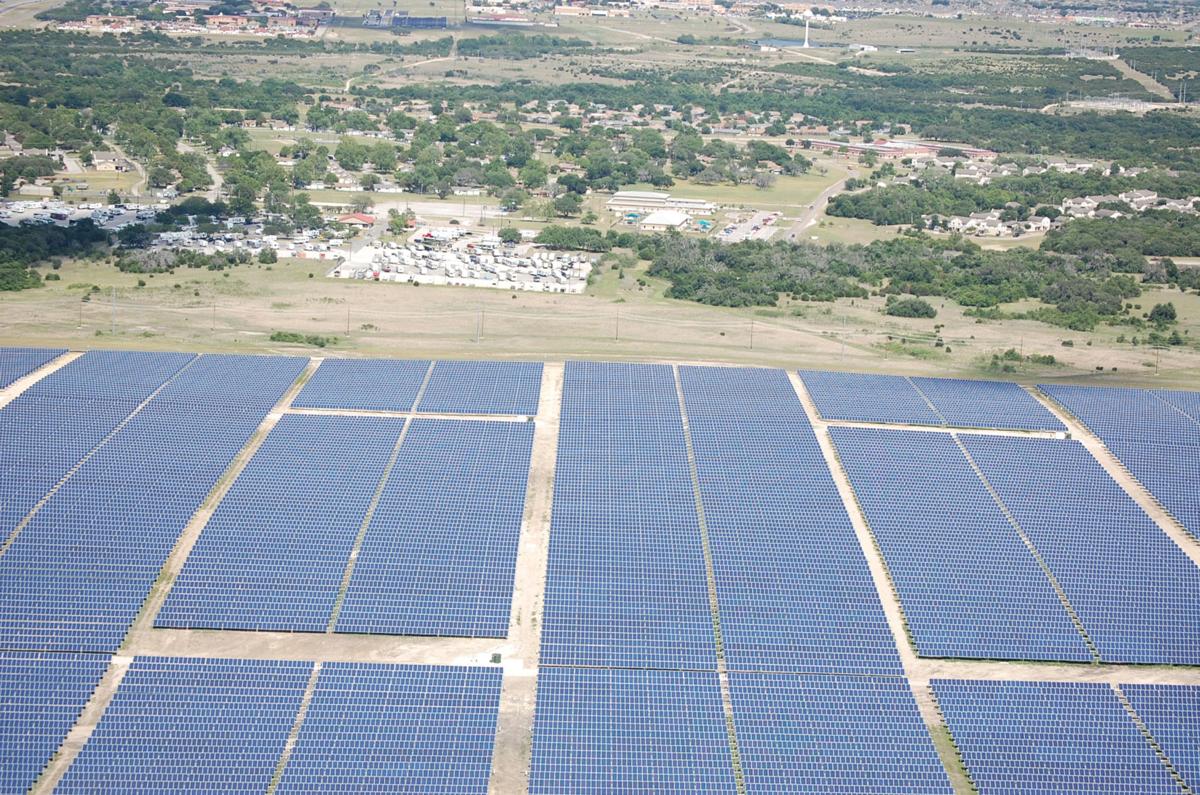
For example, a joint collaboration between the US Army, the US General Services Administration, and Georgia Power, was responsible for a $75 million 30MW solar photovoltaic power plant that was installed in the Fort Gordon military installation in Augusta, Georgia. This array, one of three located on military bases in the state, has over 137,000 PV panels spread over 270 acres of government-owned land. When the civilian electrical grid is operational, the solar plant can share the energy it gathers with the grid. But in the event of a grid failure, the electricity is diverted to the base to ensure it remains operational. This is one of many new Local Energy business models the military and utilities are exploring to lower costs, improve resiliency, and deploy more clean energy. It’s an arrangement that’s good for the military, and good for the civilian community as well.
Jumpstarting the clean-energy market
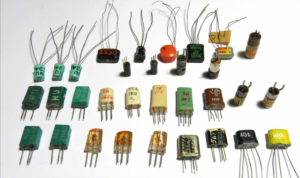
Military investment will benefit the larger clean energy market, too. With the Department of Defense as a customer, volumes will go up and costs will come down, making panels, batteries, and the associated technology more affordable for everyone. The exact same thing happened with the market for semiconductors back in the 1960’s. As John Perlin shares in his book, Let it Shine, semiconductors like transistors and integrated circuits were initially too expensive for the private sector. But after the Defense Department saw their potential, they began purchasing larger and large volumes. Within 6 years prices dropped from $50 a device to $2.50. How long would it have taken for the microcomputer revolution of the late 70s to begin, without the military’s role in driving down prices? Would we even have mobile phones, computers, or the internet? It is exciting to think what the military’s early support for microgrids will mean for lower prices and wider adoption of Local Energy in the years to come.
Electricity is an essential resource for the military. It lights buildings, it powers medical equipment, and it runs computers and communications. Clean, local energy, in the form of solar panels and microgrids, is quickly becoming a foundational part of the military’s strategy for resilience and warfighting readiness. While costs are important, the military has even stricter measurements for clean energy. Solar and batteries are saving lives by reducing the convoys delivering fuel to remote bases. Local, on-site solar arrays are not only lowering the cost of power, they are ensuring that larger military bases cannot be threatened by grid outages and cyber-attacks on electric infrastructure.
Resilience, reduced costs, and less reliance on non-domestic sources of energy are not just objectives for the military —these are goals of our civilian infrastructure as well. The military’s early adoption of clean, local energy is not only proving that these technologies are viable, they are creating economies of scale which will result in lower prices across both the military and civilian worlds.

